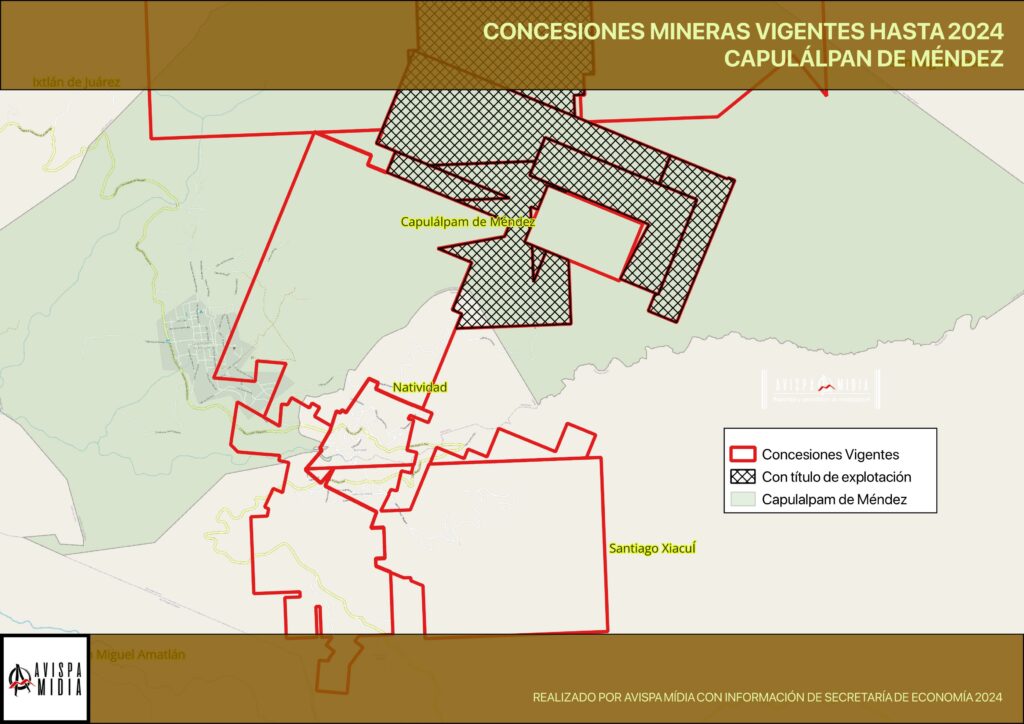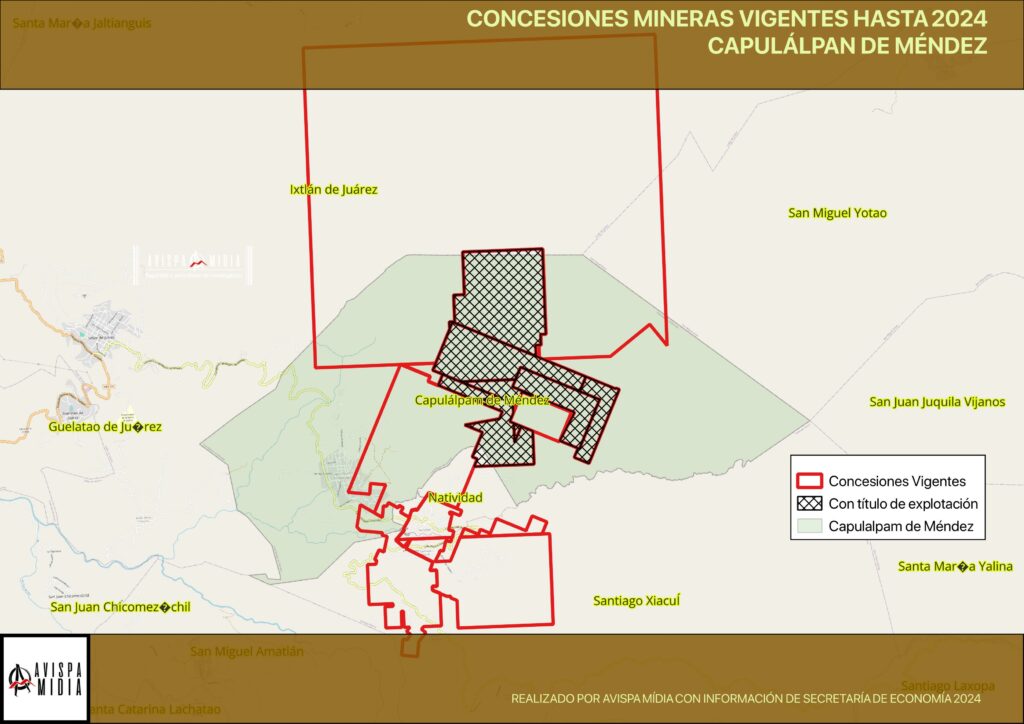Cover image: Community authorities during a press conference denounce the mining exploitation. Photo: Santiago Navarro F
On Saturday, June 1, one day before the elections in Mexico, community members of Capulálpam de Méndez, in the northern sierra mountains of Oaxaca, declared a maximum alert after identifying two dump trucks transporting minerals extracted from the bowels of those beautiful mountains. Immediately, the Zapotec community blocked the exit of the community, retaining one of the trucks while the other managed to escape.
The stopped truck contained 22 tons of ground rock. The truck was let go, but the material were retained. “This material was already processed. Studies were done and it has high levels of gold and silver,” said Francisco García López, president of the communal lands commission of the municipality.
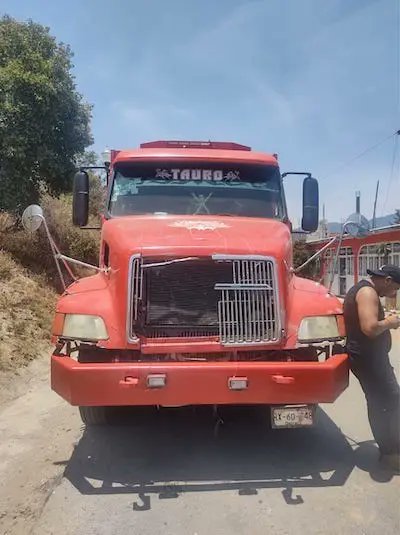
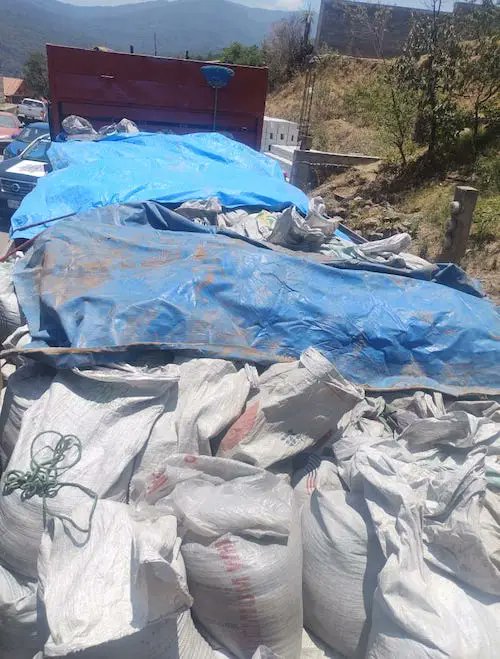
In accordance with a decision made by the community assembly, they blocked the roads between Capulálpam and Ixtlán, as well as the federal highway that connects Oaxaca and Tuxtepec. The community also prevented the state from installing voting booths in their territory for the election. “If the government doesn’t pay attention to something legitimate and just, what’s the point of installing voting booths. So, in a decision made by the community, the voting booths were not installed,” said the commissioner.
Complaints against Compañia Minera de Natividad and Anexas, S.A. de C.V. for the exploitation of minerals without the permission of the community are not new. “On two occasions the governor of the state (Salomón Jara) visited the community. We let him know that the mining activities need to be suspended. However, we were told that the company wasn’t operating.”
As a result, the community agrarian authorities decided to take matters into their own hands. They decided to hand over evidence. “For that reason, the assembly retained the truck with the minerals. It is evident that they are working late at night and in the early morning hours. The government doesn’t say anything. So, we presented them with the evidence. They didn’t listen, so we blocked the roads.”
Following the measures taken by Capulálpam, with support of other communities who also began to set up blockades at the entrances to their communities, the state government promised to receive a commission of local authorities on Monday, June 3. Those who were to attend on part of the government were the Secretary of Government, Jesús Romero López, the Commission of Peace and federal authorities. “We decided to lift the highway blockade and attend the meeting,” says García. However, they decided to cancel the dialogue because “unfortunately they are once again mocking our communities, bringing 2nd and 3rd level officials to resolve the problem. With this, we decided to cancel the dialogue requesting instead that it be directly with federal authorities.”
The communities again installed the highway blockades. On Monday night, they were told that on Wednesday, June 5, they would be received by federal authorities from the Secretary of Economy, Secretary of Environment, and National Water Commission, the same authorities who have already received countless complaints.
The Legal Context
In February of this year, the community of Capulálpam won an injunction in relation to three mining concessions pertaining to Compañia Minera de Nativdad y Anexas, S.A. de C.V. However, they didn’t specify which concessions they are because, according to authorities, they are still in litigation.They explain that the judge ordered the mining concessions in Capulálpam be rendered invalid.
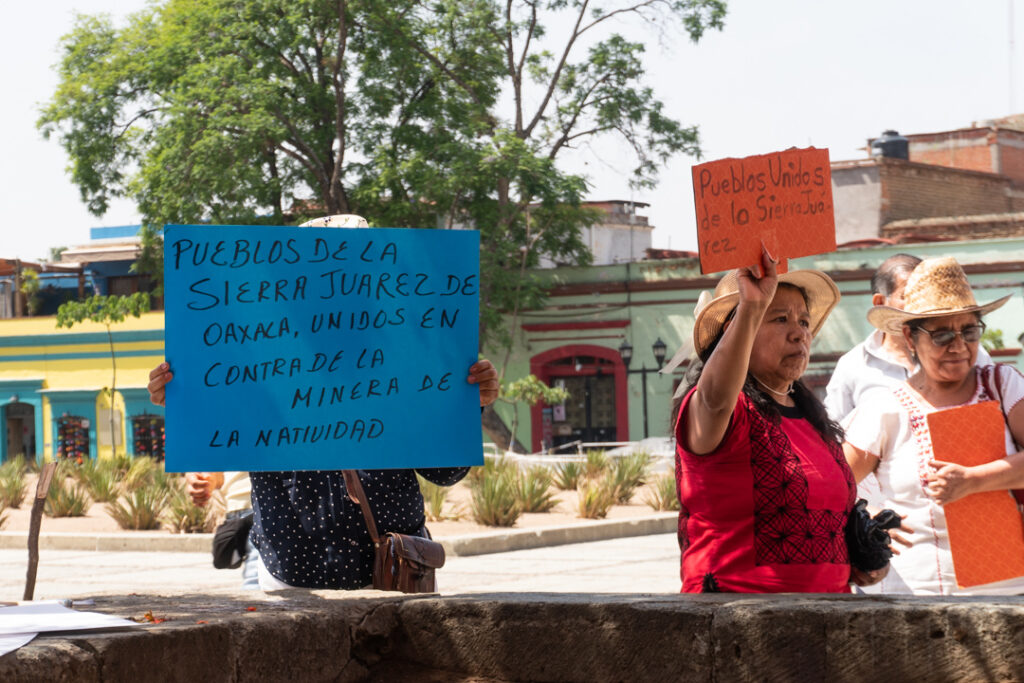

Photos: Santiago Navarro F
Likewise, on Tuesday, June 4, authorities of Capulálpam, Lachatao, and other communities declared in a press conference that since 2003 they have filed multiple complaints against the company without any response from state or federal authorities. “They haven’t acted in supervising and applying the laws for the protection of the environment and the protection of the rights of our community and the communities of the Sierra Juarez that have been directly impacted by the Natividad mining operation,” they pointed out.
Among the impacts mentioned are the depletion of thirteen aquifers, contamination of the soil and water sources with mining waste, and the collapse of three toxic waste tailings deposits in 2010, which to this day have not been repaired.
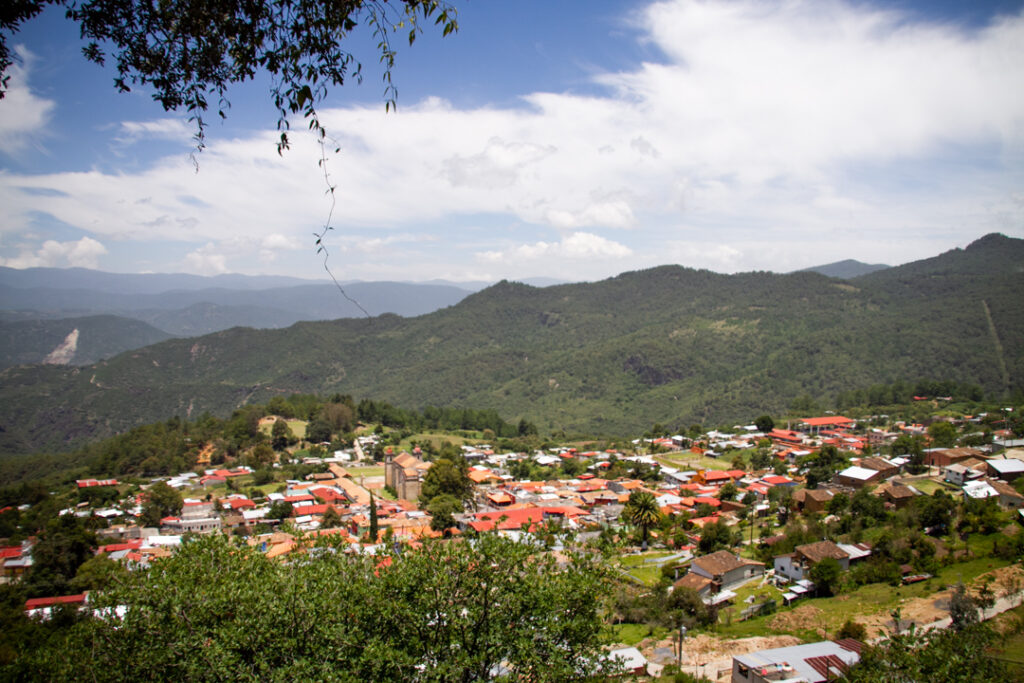
Community of Capulálpam de Méndez, Oaxaca. Photo: Santiago Navarro F
The communities also pointed out that the mining company is responsible for the emission of different pollutants, like Polychlorinated biphenyl from abandoned electrical transformers, that are a mix of chemical compounds which, according to the Agency for Toxic Substances and Disease Registry, cause neurological and immunological alterations in children and cancer in animals. They also denounced the contaminants such as arsenic, lead, and cadmium in the soil and bodies of water.
For this reason, the community demands that the federal government close the mine and that the company take responsibility in repairing the “damages caused by the contamination.”
More Concessions
The community authorities mention that in their territory there exists only three concessions that were suspended through a writ of amparo. The Avispa Midia team reviewed the cartographic database solicited from the Secretary of Economy, proportioned by the Unidad de Coordinación de Actividades Extractivas in February of 2024. We were able to identify that in the municipality of Capulálpam, as of 2024, there are thirteen concessions: seven concessions with exploitation titles, six with exploration permits.
Of the total concessions, at least nine belong to the Compañia Minera de Natividad y Anexas, S.A. de C.V. The others, according to official documents, are original concessions granted to Fausto Calvo Sumano and Judith Patricia Underwood, who own Sociedad Underwood and Calvo Compañía, S.N.C.
In total, the thirteen concessions—with gold, silver, copper and lead deposits—exceed 5,000 hectares. One of the mining concessions called “Providencia 1” covers part of the urban center of the community.
Likewise, another mining concession called “Providencia 2” covers three municipalities. In addition to Capulálpam, it expands into the municipalities of Natividad and Santiago Xiacuí.
The communities lack clear information regarding the location, extension, and status of the concessions which are permitted until 2050 and 2060.
